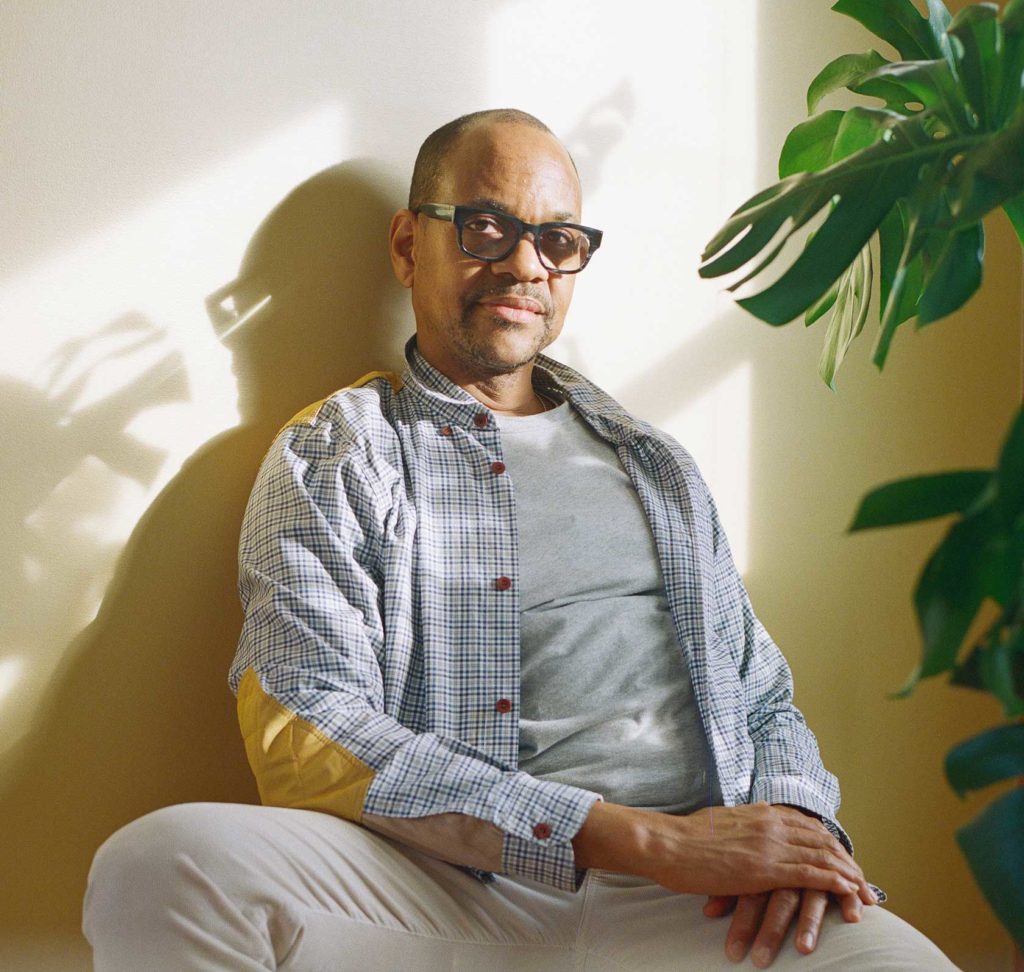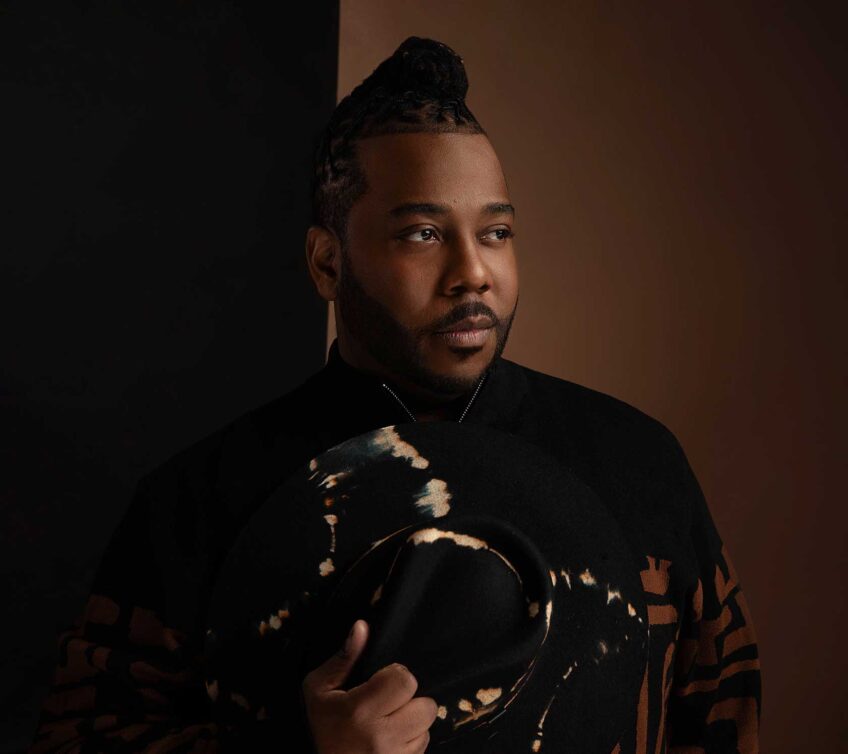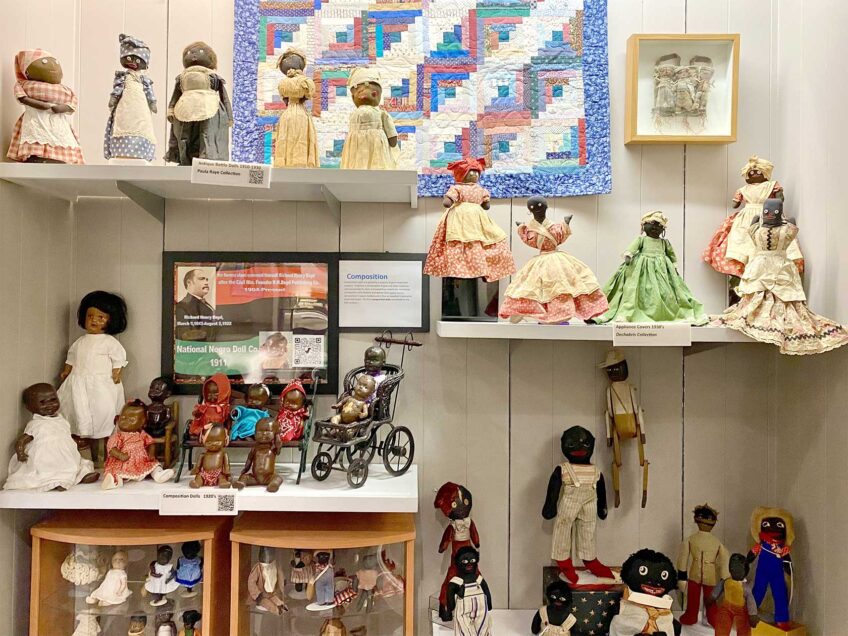
Lyle Ashton Harris returns to New England for his first solo show in over two decades with an exhibition at the Rose Art Museum at Brandeis University. “Lyle Ashton Harris: Our first and last love” examines his 35-year career through the lens of a dynamic new series of work. Co-organized with the Queens Museum, New York, the exhibition will open at the Rose on Feb. 9 and run through July 2.
The Shadow Works series will anchor the exhibit, probing previous works and examining themes that have followed Harris throughout his career, from legacy and inheritance to the history of discrimination and violence against Black and queer communities that persists today. More than 40 artworks will be exhibited in thematic clusters around the Shadow Works series, illustrating how Harris’s artistic archive speaks to the contemporary moment.

“Succession,” 2020. Ghanaian cloth, dye sublimation prints, and artist’s ephemera. Private Collection. © Lyle Ashton Harris. IMAGE: Courtesy of the artist and LGDR, New York
“In his Shadow Works, Harris re-engages with prior artworks and earlier moments in his life. The series speaks to his interest in developing an archive of his own,” explains Caitlin Julia Rubin, associate curator at the Rose Art Museum and co-curator of the exhibition with the Queens Museum’s Lauren Haynes. “The Shadow Works reveal dynamic shifts in Harris’ creative practice, and how his ongoing relationship to certain recurrent themes and materials has both expanded and coalesced over the years.”
In his process for the Shadow Works series, Harris has taken threads from his early work and expanded them into something wholly new. Dating back to 1996, Harris was utilizing montages of disparate elements, including photographs, in his work. He was also playing with the ideas of inheritance and legacy, utilizing family photographs taken by his grandfather.
Here, these ideas go a step further. Each sculptural montage is rooted in Ghanaian textiles Harris acquired during his time living and teaching in Ghana. The textiles are inset with photographic dye sublimation prints on aluminum, embedding photographs into the piece in a unique way. Each work also includes a personal artifact attached directly to the sculpture, for example, one of Harris’ own dreadlocks or a shell he found while visiting his father’s homeland of Saint Kitts.

“Oracle,” 2020. Ghanaian cloth, dye sublimation prints, and artist’s ephemera. Private Collection. © Lyle Ashton Harris IMAGE: Courtesy of the artist and David Castillo, Miami
The works are deeply personal, but also speak to a broader historical and social context. In “Oracle,” images of Harris’ romantic partners are embedded in a 70-year-old kente cloth alongside portraits related to the 2016 Pulse nightclub shooting and references to some of Harris’s works in an early show titled “The Watering Hole.” Here, history is quite literally embedded into the piece, but the social issue of violence against the queer community continues to loom large today.
“’Oracle’ not only references, let’s say, the murder of Luis Daniel Wilson-Leon in the Pulse club, it references an early work in ‘The Watering Hole’ that was referencing Jeffrey Dahmer. Twenty years later, that’s one of the highest grossing films on Netflix,” says Harris. “I’m interested in the way the work historicized itself and the way there are clues for those who are interested and curious about the progression of that.”
“Our first and last love” also allows viewers to experience art the way Harris does. Harris sees art not just as an aesthetically beautiful and powerful medium, though it is that, but as a space to work through complex concepts and histories.
“I have always been interested in the tension between formal engagement with the work but also dealing with often complex, challenging issues,” says Harris. “For me, the art is a site in which one can actually do that.” The exhibition gives the audience that space as well, to reflect, to discuss and to digest large social issues and how they’ve impacted personal life experiences.
Harris is enthusiastic about working with the Rose because of its history of presenting cutting-edge work and because it’s a teaching museum. As a professor himself, the artist understands the importance of students engaging in a wide breadth of artistic experiences. Some of the works in the show date back to Harris’ early days at Wesleyan University, when he, too, was finding his artistic voice and practice. Programming related to the exhibition is still being finalized, but Harris says it will likely include a lecture by him and conversations about the exhibit between him and other leading artistic voices.
“My work, whether in group shows or solo shows, has always been a space in which ideas, formally or conceptually, could find a place where one could be at once seduced by beauty, but also engaged in some of the more challenging or difficult things that we may not want to talk about,” says Harris. “It’s going to be interesting to see what type of conversations it could create between the Boston and larger New England communities.”


![Banner [Virtual] Art Gallery](https://baystatebanner.com/wp-content/uploads/2024/04/Cagen-Luse_Men-at-store-e1713991226112-150x150.jpg)

![Banner [Virtual] Art Gallery](https://baystatebanner.com/wp-content/uploads/2024/04/Cagen-Luse_Men-at-store-e1713991226112-848x569.jpg)

